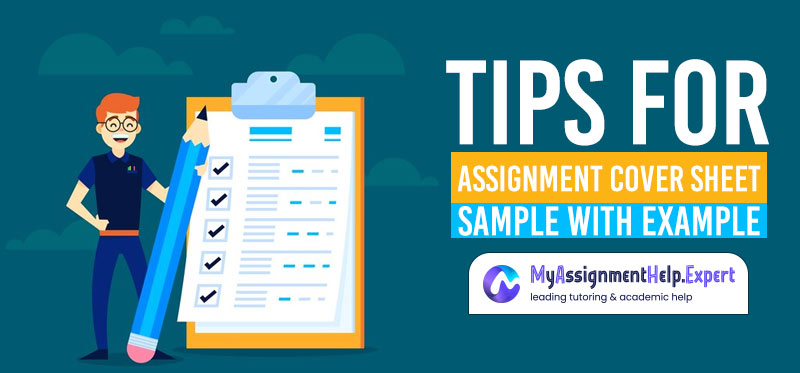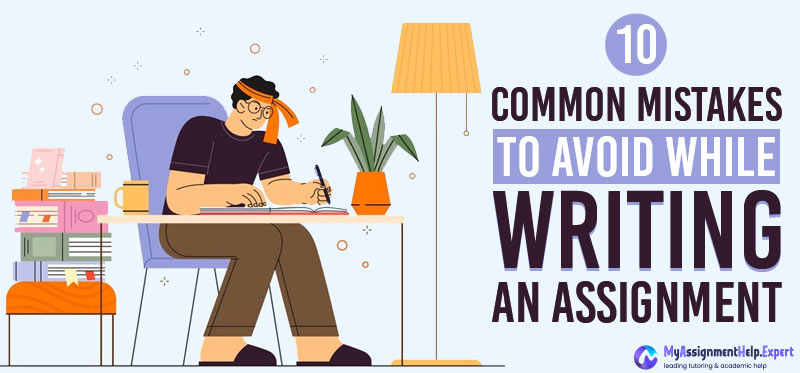Complete Guide to Writing Teel Papers
 Min Seow
Min Seow
 08 September,2023
08 September,2023
“What is TEEL? How to write it? How to structure TEEL paragraphs?” Experiencing dilemma wondering this?
Don’t worry you have clicked into the right space. Today we are going to discuss about TEEL and everything related to it. In the end you will also find sample papers and tips on how to write best TEEL papers.
What Is TEEL?
TEEL stands for four things. This includes topic sentence, explanation, evidence, and link. It is a structured approach used in academic writing to create clear and coherent paragraphs.
Using the TEEL structure helps organize thoughts and maintain focus. It also enhances the readability of academic essays or analytical writing.
What Is the TEEL Structure?
The TEEL structure is a writing framework. This helps students and writers organize their thoughts and arguments coherently.
Here is what each of it stands for:
Topic Sentence
The paragraph should begin with a sentence which adds clarity to the topic. This introduces the main idea or argument of the paragraph.
Explanation
Following the topic sentence, an explanation elaborates on the main idea. This explanation provides background information on the topic. It also provides further details to support the topic sentence.
Evidence
After explaining, the writer presents evidence. This can be quotes, data, examples, or references to support the claims made in the topic.
Link
The paragraph concludes with a link sentence. This connects the discussed points back to the essay’s overall thesis.
Using it as a transitional state also works.
The TEEL paragraph structure is commonly used in academic writing. This can be essays and other persuasive or analytical writing forms. It helps writers present their ideas logically and persuasively. This ensures that their arguments are well-structured and supported by evidence.
Teel Introduction Structure
Writing a TEEL introduction involves setting up the context, introducing the main topic, and presenting your thesis statement. Here’s how to structure a TEEL introduction
1. Topic Hook
Start with a captivating hook that grabs the reader’s attention and introduces the broader topic you’ll be discussing. This can be a quote, a surprising fact, a thought-provoking question etc.
2. Explanation of the Topic
After the hook, briefly explain the topic’s significance and relevance. This should help the reader understand why the topic is worth exploring and what issues or ideas it encompasses.
3. Engaging the Audience
Connect the topic to your audience by showing why it matters to them. This can be done by highlighting its real-world implications. It also shows relevance to current events, or personal connections.
4. Thesis Statement
Present your thesis statement. This should be a concise sentence outlining the main argument or point you will address in the essay. It sets the direction for your entire essay and encapsulates what you’ll be discussing in the subsequent TEEL paragraphs.
And there you know how to outline TEEL introduction.
Teel Structure Sentence Starters
Scratching your head wondering how to write epic TEEL sentence starters? Keep reading to find good TEEL paragraphs starters:
i. Topic Sentence (T):
“An important factor to discuss is…”
“The main argument revolves around…”
“One significant aspect to consider is…”
“A key point to highlight is…”
“In regards to the discussion, it is pretty evident that…”
ii. Explanation (E):
Providing context, it’s clear that…”
“Expanding on this idea, it’s worth mentioning that…”
“This can be better understood by…”
“To elaborate further, it’s important to note that…”
“In other words, this means…”
iii. Evidence (E):
“The evidence gathered, shows that….”
“This is evident in [event/example] where…”
“For example, according to [source],”
“Supporting this view, [author] states that…”
“An illustrative instance of this is…”
“To support the case, the evidence suggests….”
“This is evident in [event/example] where…”
iv. Link (L):
“Overall, this highlights the importance of…”
“In conclusion, this paragraph contributes to the broader argument that…”
“Through this lens, it becomes evident that…”
“Overall, we can depict that….”
“Taken together, these points contribute to the understanding that…”
How to Structure a Teel Paragraph?
Structuring a TEEL paragraph involves following the TEEL framework. This creates a coherent and well-organized paragraph. Here’s a breakdown of how to structure a TEEL paragraph:
Topic Sentence (T)
Start your paragraph with a clear topic sentence. Introduce the main point you will discuss. This sentence should give the reader a preview of what the paragraph will cover.
Explanation (E)
After the topic sentence, provide an explanation or elaboration of your main point. This is where you expand on the idea presented in the topic sentence. You can provide context, background information, or reasoning to support your point.
Evidence (E):
Following the explanation, present evidence that supports your main point. This evidence can be real-life events or data. Cross-check that they are from credible sources to keep them legit. Ensure the evidence directly relates to your main point and helps strengthen your argument.
Explanation (E)
After presenting evidence, explain how the evidence supports your main point. Analyze the evidence and discuss its relevance. Also, clarify how it connects to your argument. This step is crucial in showing your readers how the evidence reinforces your point.
Link (L)
Conclude the paragraph by linking the information to your argument or thesis. Explain how the point you’ve discussed in the paragraph contributes to the larger theme or idea you’re trying to convey.
Follow these tips to create your TEEL structure and you should have no problem at all.
Teel Paper Example
We know that there are students who prefer TEEL sample papers to get an idea. Well to help you out, here we have a TEEL example below:
Tree Diseases: Causes and Effects on the Environment and World Economy
Invasive species, pests, and different pathogens cause a lot of damage to forest trees. Write about different causes such as Dutch Elm disease, Ash die back,etc. Define the most dangerous diseases, and write about how many trees they killed. Do that in several paragraphs.
Finally, write about the economic and ecological impacts of tree disease. Do not be specific to a single country.
Invasive species, pests, and pathogens and their causes
The invasive species, pests, and pathogens cause several tree diseases. They have been a challenge to forest conservation. They cause tree diseases, affecting most tree species worldwide, making both natural and planted forests less productive. These diseases include the Dutch elm disease and ash dieback, among many others.
10+ TEEL Topic Ideas
If you are looking for some good TEEL topics then here are some ideas for you:
1. Literature
Topic: Symbolism in “The Great Gatsby.”
Explanation: Exploring the deeper meanings behind key symbols.
Evidence: Analyzing instances of the green light and the Valley of Ashes.
Link: Relating symbolism to the novel’s themes of wealth and illusion.
2. Economics
Topic: The role of supply and demand in determining product prices.
Explanation: Explaining how scarcity and consumer demand influence pricing.
Evidence: Providing examples of price fluctuations due to changing supply and demand.
Link: Discussing implications for market equilibrium and consumer behavior.
3. Climate Change
Topic: The impact of deforestation on global warming.
Explanation: Describing how deforestation contributes to carbon dioxide levels.
Evidence: Presenting statistics on forest loss and rising temperatures.
Link: Connecting the effects of deforestation to broader climate change concerns.
4. Technology and Society
Topic: The influence of social media on interpersonal communication.
Explanation: Discussing the shift from face-to-face interactions to digital platforms.
Evidence: Citing studies showing reduced in-person interaction among youth.
Link: Addressing potential consequences for social skills and relationships.
5. History
Topic: The impact of the Industrial Revolution on urbanization.
Explanation: Describing how industrialization led to mass migration to cities.
Evidence: Citing examples of newly formed industrial cities.
Link: Discussing the socioeconomic changes resulting from urbanization.
6. Healthcare
Topic: The benefits of mindfulness meditation on stress reduction.
Explanation: Detailing how mindfulness practices affect the brain and stress response.
Evidence: Referring to studies showing decreased cortical levels in practitioners.
Link: Addressing the potential integration of mindfulness in stress management.
7. Psychology
Topic: The relationship between nature and nurture in personality development.
Explanation: Exploring the interplay between genetic predisposition and environment.
Evidence: Citing twin studies and cross-cultural research on personality traits.
Link: Discussing the ongoing debate surrounding nature versus nurture.
8. Education
Topic: The effectiveness of flipped classrooms in enhancing student engagement.
Explanation: Describing the concept of flipped learning and its benefits.
Evidence: Presenting studies demonstrating improved student participation.
Link: Addressing the potential future of flipped classrooms in education.
9. Politics
Topic: The impact of media framing on public perception of political events.
Explanation: Discuss how media presentation shapes audience interpretation.
Evidence: Analyzing contrasting media coverage of a specific event.
Link: Considering the implications for media’s role in shaping public opinion.
10. Art and Culture:
Topic: Analyzing the portrayal of women in classical art.
Explanation: Examining societal influences on artistic representations of women.
Evidence: Analyzing artworks from different periods.
Link: Reflecting on the evolution of gender representation in art.
And there you have best TEEL topic ideas on every subject to help you out. Hopefully this will help you craft reasonable TEEL papers which impress your professors.
Tips To Remember While Writing TEEL Papers
When writing TEEL papers, keeping a few key tips in mind can help you create organized and persuasive works:
1. Clear Topic Sentences
Ensure each paragraph begins with a strong and clear topic sentence. This should outline the paragraph’s main point. This provides a roadmap for your readers.
2. Consistent Explanation
Elaborate on your topic sentence by providing relevant context, definitions, or background information. Ensure your explanation supports your argument and is consistent with the essay’s focus.
3. Relevant Evidence
Select evidence that directly supports your main points. Use credible sources such as academic research, statistics, expert opinions, or real-life examples. Always cite your sources properly.
4. Thorough Explanation
After presenting evidence, explain its significance and how it relates to your argument. Don’t assume the reader will immediately see the connection. Guide them through your thought process.
5. Logical Flow
Transition smoothly between paragraphs by using transitional phrases. Each paragraph should build on the previous one. This maintains a logical and coherent flow of ideas.
6. Avoid Repetition
Ensure each paragraph introduces your argument’s new aspect or angle. Avoid repeating the same evidence or ideas in multiple paragraphs.
7. Strong Linkages
In your final sentence, the “Link” part of TEEL, tie your paragraph back to your essay’s main thesis or argument. This demonstrates how your points contribute to the overall message.
8. Proofreading
Carefully proofread your essay for grammar, spelling, and punctuation errors. Clear writing enhances the readability and credibility of your work.
9. Stay Concise
While explanations are important, avoid unnecessary elaboration. Focus on providing relevant information to support your argument without going off-topic.
10. Revise and Edit
After completing your first draft, take the time to revise and refine your essay. Check for clarity, coherence, and overall effectiveness of your TEEL structure.
Need Help With TEEL Papers? Connect With Us
By now we have covered all points related to TEEL structure. But we understand if you still have doubts. In that case, connect with our experts. Our professionals have experience of over decades to compose impeccable TEEL structure paragraphs. We offer high quality and authentic papers before allotted date. Also additional perks like free revisions and sample papers are provided. So what are you waiting for? Connect with us today to get best TEEL papers at affordable costs.
Frequently Asked Questions By Students-
1. Why is the TEEL structure effective for organizing paragraphs?
The TEEL structure is effective as it ensures clear communication. It begins with a clear point (Topic sentence), elaborates (Explanation), validates with evidence (Evidence), and deepens understanding (Explanation). Finally, it ties back to the main argument (Link). This logical flow aids understanding and strengthens the overall paragraph’s impact.
2. Is the TEEL structure applicable to all types of writing or specific genres?
The TEEL structure is versatile and applicable to various types of writing. This includes essays, reports, and analytical pieces. However, its suitability might vary depending on the writing’s purpose and complexity. While widely used in academic and persuasive writing, creative works or informal content might benefit from a more flexible structure.
3. What role does “Evidence” play in the TEEL structure?
“Evidence” in the TEEL structure plays a crucial role by providing support and validation for the main point presented in the paragraph. It offers tangible examples, data, or references that demonstrate the accuracy of the argument. This substantiates the writer’s claims. It also makes the argument more persuasive to the reader.
4. How do you select and present evidence within a TEEL paragraph?
When selecting evidence for a TEEL paragraph, ensure it directly supports the main point. Use credible sources like research papers, expert opinions, or relevant examples. Present evidence by quoting, paraphrasing, or summarizing, and provide proper citations. Explain the relevance and context of the evidence to highlight its connection to the main argument.
5. Can you explain how a TEEL paragraph typically includes “Explanation “?
“Explanation” in a TEEL paragraph elaborates on the main point. For instance, if discussing climate change (T), the explanation could delve into the causes and effects of greenhouse gas emissions (E). It might discuss human activities and their impact on the environment. This elaboration helps readers understand the topic’s complexities and its significance within the broader context.
6. Are there any variations or modifications to the TEEL structure?
Variations like PEEL (Point, Evidence, Explanation, and Link) and CEW (Claim, Evidence, Warrant) are used. They maintain the core idea of presenting points with supporting elements but may have different labels or slightly altered order. Tailor the structure to suit the writing’s purpose and guidelines while maintaining logical flow.
7. Can you offer tips for transitioning between different TEEL paragraphs in an essay?
To transition between TEEL paragraphs effectively, use transitional phrases that preview the upcoming topic. For instance, use phrases like “Moreover,…” or “In addition to this,…” to introduce new points while linking them to the previous ones. This maintains a cohesive flow and guides the reader through your essay’s progression.
8. How many TEEL paragraphs are typically included in an essay?
The number of TEEL paragraphs in an essay varies based on the essay’s length and complexity. Short essays might have three to four paragraphs. Whereas longer ones can have multiple paragraphs. Each paragraph focuses on a specific aspect or argument related to the essay’s topic.









